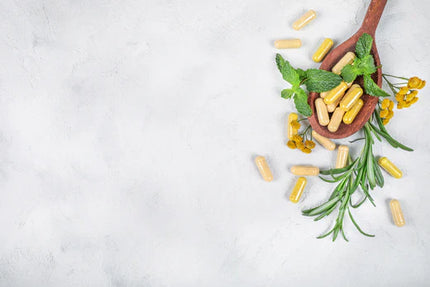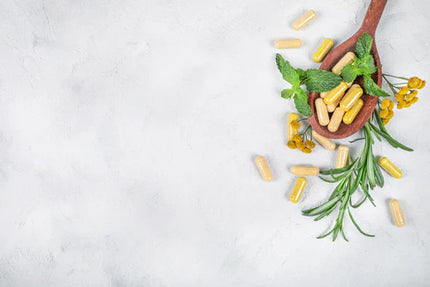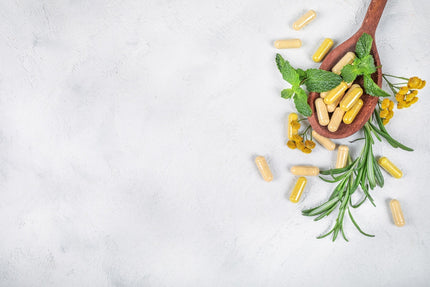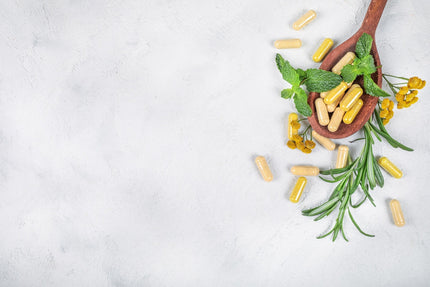Pathophysiology
Vaginal infections are commonly caused by bacterial vaginosis (BV), aerobic vaginosis (AV), cytolytic vaginosis (CV), vulvovaginal candidiasis (VVC), and trichomoniasis.[1–4] Less common causes include foreign bodies, Group A streptococci, toxic shock syndrome, and HIV-related ulceration.[1] The normal vaginal environment, maintained by lactobacilli-producing hydrogen peroxide, has a low pH (3.8-4.2) that suppresses harmful bacteria.[2,4] Oestrogen levels influence the vaginal microbiota by increasing glycogen, which lactobacilli ferment into lactic acid, lowering pH.[2,5]
- BV occurs when lactobacilli are lost, raising pH and allowing anaerobes like Gardnerella vaginalis to thrive, producing a fishy odour and increasing discharge.[1,2] BV is linked to higher risks of HIV, HSV-2, gonorrhoea, and chlamydia.[1]
- AV involves a disturbed microbiota with aerobic pathogens replacing lactobacilli, causing significant vaginal leucocytosis and epithelial inflammation with significant discharge. Unlike BV, AV is characterised by red and oedematous vaginal tissue as a result of worsened inflammation.[4]
- CV involves overgrowth of lactobacilli, (particularly Lactobacillus crispatus), leading to tissue cytolysis, thick discharge and irritation.[2,6] Often misdiagnosed as VVC due to similar symptoms and pH.[1]
- VVC results from Candida overgrowth, causing inflammation, swelling, and discharge, with a normal pH (4.0-4.5).[1]
- Trichomoniasis, a sexually transmitted infection caused by Trichomonas vaginalis, leads to malodorous discharge and irritation, with symptoms often appearing around menstruation.[1,7]
Identify signs of vaginal infections
The following tables have been modified from the work of Moira Bradfield. For more information regarding vaginal infections and vaginal health see Intimate Ecology or join the Intimate Ecology community.
Table 1: Signs and Symptoms of Common Vaginal Infections
| Signs & Symptoms | Healthy vagina[1] | Bacterial vaginosis[1,7] | Vulvovaginal candidiasis[1,7] | Trichomoniasis[1,7] | Aerobic vaginosis[4] | Cytolytic vaginosis[1,2,6] |
|---|---|---|---|---|---|---|
| Discharge | Variable, scant to moderate amounts. Cyclical white/clear egg-white consistency. | Moderate amounts of homogenous grey-white discharge. | Scant to moderate amounts of clumped white discharge. | Profuse amounts of yellow frothy/bubbly discharge. | Yellow/green tinge. Homogenous and thick. | Thick white. |
| Pain & irritation | None | None typically – dryness can be reported. Up to 50% of women are asymptomatic. | Variable presentation. Erythema and pruritus, dysuria and burning may occur. | Erythema and swelling of vulvar and vaginal epithelium is common. Dysuria and pruritus may arise. | Variable presentation. Erythema and excoriation is common. Pain with intercourse is also likely. | Variable presentation. Erythema and excoriation is common. |
| Risk factors/ patterns | N/A | Post menses, pH disruption: ejaculative sex, oral sex, women who have sex with women, smoking, some antibiotics. | Mid luteal phase, uncontrolled blood glucose levels and diabetes, antibiotic-use, pregnancy, sexual intercourse, oral sex. | Sex with an infected partner and reduced immune function. | Menopause, low estrogen states, pregnancy (i.e. Group B Strep). | May be increased in the luteal phase of the menstrual cycle. |
Factors influencing vaginal infections
- Antibiotic Therapy: Broad-spectrum antibiotics can eliminate protective vaginal flora, leading to dysbiosis and infections like BV, AV, and VVC.[1,4,8]
- Oestrogen Levels: Oestrogen increases glycogen, promoting lactic acid production and lowering pH, influencing vaginal flora.[2] High oestrogen normalizes BV-associated microbes, while low oestrogen increases BV risk. Oestrogen can also exacerbate CV and VVC symptoms.[8,9]
- Oral Contraceptives (OCPs): OCPs, due to their oestrogen content, are linked to increased VVC.[1]
- Diabetes Mellitus: Uncontrolled diabetes raises glycogen levels, enhancing Candida proliferation and increasing VVC prevalence.[1] Conditions that feature elevated blood glucose and raised oestrogen levels (i.e. gestational diabetes) have been associated with a greater prevalence of VVC.[10]
- Sexual Activity: High intercourse frequency, new or multiple partners, and sharing vaginal sex toys can increase the risk of BV, AV, and VVC.[8,11,12] Male ejaculate alkalinity and sexual practices can disrupt vaginal acidity for six to 17 hours increasing dysbiosis risk.[13]
- Impaired Immune Function: Chronic stress, corticosteroids, or compromised immunity correlate with recurrent VVC and Trichomonas infections.[1,12]
- Douching/Bidet Use: Frequent douching disrupts vaginal microbial balance, leading to BV and AV.[4,8]
- Intrauterine Devices (IUDs): IUDs are associated with BV, AV and VVC.[1,4,12] Its presence can aggravate epithelial inflammation in vaginal infections, and may act as a reservoir for biofilm-forming yeasts.[12]
- Spermicide/Condom Use: These contraceptives may disturb vaginal microbiota, with yeasts metabolizing spermicides.[12]
- Smoking: Cigarette use is linked to BV, increasing biogenic amines that affect pathogen virulence and contribute to malodour.[14]
Red Flags
• Pregnancy[1,2,12,15,16]
• Cervical dysplasia/low-grade squamous intraepithelial lesions (LGSIL)[17–19]
• Sexually transmitted infections (STIs)[1,4]
• Recurrent in vitro fertilisation (IVF) failure[20]
Treatment Recommendations
Probiotics Lactobacillus rhamnosus (GR-1™) and Lactobacillus reuteri (RC-14™) with liquorice for women’s urogenital health
Dose: 1 capsule daily
L. rhamnosus (GR-1™) and L. reuteri (RC-14™) effectively reduce the growth and adhesion of uropathogens, shown to treat and prevent uUTI.[21] For example, a trial with 252 women suffering from recurrent UTIs, treatment with 2 billion CFU (Colony Forming Units) each of GR-1™ and RC-14™ daily for 12 months achieved similar reductions in UTI recurrence compared to daily prophylactic antibiotics (trimethoprim-sulfamethoxazole). The probiotic treatment induced no antibiotic resistance, compared to 80-95% increased resistance to E. coli with antibiotics.[22] Extra mucosal membrane health is offered by combining with deglycyrrhizined extract of liquorice root (GutGard® liquorice).[23]
For prevention of recurrent urogenital tract infections and to support women’s overall health and wellbeing
Multistrain Probiotics with B12 and Folate for Women's Multi Benefit Support
Dosage: 1 capsule daily
This multi benefit probiotic formulation harnesses the power of the gut-vaginal axis, gut-brain axis and gut-immune axis to provide daily support for women. For recurrent urogenital tract infections, targeting both gut and vaginal microbiome may offer preventative support.
- 1 billion CFU/d Lactobacillus plantarum (CLEPIUS™ Lpla33™) decreases stress scores by 10% in 4 weeks and reduces digestive bloating by 44% in 8 weeks.[24]
- 1 billion CFU/d Bifidobacterium animalis ssp lactis (BB-12™) boosts bowel movement frequency by 33% in 4 weeks and strengthens immunity in just 14 days.[25,26]
- 1 billion CFU/d each of Lactobacillus rhamnosus (GR-1™) and Lactobacillus reuteri (RC-14™) taken orally, breaks through resistant biofilms that cause recurrent urinary tract and vaginal infections.[27,28] Assists in the management and prevention of bacterial vaginosis and urinary tract infections.[21,29,30]
- Activated vitamins B12 and folate are included to support cellular energy production.[31,32]
Additional recommendations
For restoration of gastrointestinal dysbiosis after antibiotic therapy
Strain Specific Probiotics for Gut Microbiota Restoration and Support
Dose: 1 capsule daily
Highly researched probiotic strains, Lactobacillus rhamnosus (LGG®), Saccharomyces cerevisiae (boulardii) (SB), Bifidobacterium animalis ssp lactis (BB-12®) have demonstrated the ability to disrupt pathogenic bacteria, protect commensal groups and encourage restoration in the event of disruption, enhance gastrointestinal mucosal integrity, and have a beneficial impact on gastrointestinal function.[33,34]
If vaginal infection is suspected or associated with compromised immunity
Cordyceps, Coriolus and Reishi for Immune Stimulation
Dose: Acute: 1 level metric teaspoon (2.7 g) to 125 mL water 3 times daily for 5 days
Traditionally, the mushrooms in Cordyceps, Coriolus and Reishi for Immune Stimulation have been used to strengthen and enhance the immune system.[35–37] They can support resolution of chronic, latent or recurrent infections.
Mushrooms and Astragalus for Immune System Support
Dose: 1 tablet twice daily
Polysaccharides in both mushrooms and astragalus may enhance and regulate immunity via interaction with the intestinal microbiome and gut associated lymphoid tissue (GALT). Astragalus also increases the number and activity of T-regulatory cells and modulates inflammatory pathways.[38]
Vitamin D3
Dose: 1000IU (25 mcg) daily
Vitamin D has been shown to play an important role in regulating the immune system. By inducing the innate immune system, vitamin D enhances the response to both bacterial and viral agents.[39]
High Bioavailability Zinc with Vitamin C
Dosage:
• Children 4 to 8 years: Acute: Add ¼ metric teaspoon (0.95 g) to 100 mL water once daily with food;
• Children 9 to 13 years: Acute: Add ¼ metric teaspoon (0.95 g) to 100 mL water twice daily with food; Children 9 to 13 years: Maintenance: Add ¼ metric teaspoon (0.95 g) to 100 mL water once daily with food.
• Adults and children over 14 years: Acute: Add ½ metric teaspoon (1.9 g) to 200 mL water twice daily with food; Adults and children over 14 years: Maintenance: Add ½ metric teaspoon (1.9 g) to 200 mL water once daily with food.
Zinc and vitamin C to support the development, function and mediation of immune cells required for defence against infections.[40]
AHCC® Lentinula edodes (Shiitake) extract and Ginger
Dosage: Take 2 capsules twice daily.
AHCC® Lentinula edodes (Shiitake) extract and ginger enhance immune function and surveillance, to support the immune system against HPV infections.[41,42]
Lifestyle recommendations
Basic hygiene for vaginal infections:[2]
- Avoid scented soaps and feminine hygiene products.
- Avoid douching (as this may introduce new pathogens).
- Avoid tampons (until patients are symptom-free for 6 months); if using a menstrual cup, ensure sterilisation with each use.
- Avoid the use of sterilised wipes or steroid creams (unless prescribed).
- Wear cotton underwear, and change underwear if wet (i.e. after exercise or swimming).
- Avoid restrictive or tight-fitting clothing.
- Perform monthly vulvar self-examination.
- Avoid or limit sexual activity until symptoms are clear, or alternatively use condoms. Sexual activity should be appropriately adapted until patient experiences significant improvements. This includes ensuring hygiene practices are followed, such as limiting digital penetration, oral sex, unprotected sex, use of unsanitised toys, some personal lubricants and some condom types.
- Sleep without underwear.
- Patients should keep vaginal area as dry as possible during infection.
- Avoid excessive exercise, which may lead to excessive sweating/moisture in this area if this worsens symptoms.
Dietary suggestions
Dietary patterns high in refined starches, sugar, and saturated and trans-fatty acids, poor in natural antioxidants and fibre from fruits, vegetables, and wholegrains, and poor in omega-3 fatty acids may cause an activation of the innate immune system. This may reduce the body’s immune defences as a result of excessive production of proinflammatory cytokines associated with a reduced production of anti-inflammatory cytokines. Current evidence suggests that the Mediterranean diet protects against several diseases associated with inflammation and immune activation.[43]
References
- Cohen K, Powderly W, Opal S, Calandra T, Clumeck N, Farrar J, et al. Infectious Diseases. 4th ed. Elsevier; 2017.
- Korenek P, Britt R, Hawkins C. Differentiation of the vaginoses-bacterial vaginosis, Lactobacillosis, and cytolytic vaginosis. Internet J of Adv Nurs Prac. 2002;6(1). https://ispub.com/IJANP/6/1/12743
- Yang S, Zhang Y, Liu Y, Wang J, Chen S, Li S. Clinical significance and characteristic clinical differences of cytolytic vaginosis in recurrent vulvovaginitis. Gynecol Obstet Investig. 2017;82(2):137-143. doi:10.1159/000446945
- Donders GGG, Bellen G, Grinceviciene S, Ruban K, Vieira-Baptista P. Aerobic vaginitis: no longer a stranger. Res Microbiol. 2017;168(9-10):845-858. doi:10.1016/j.resmic.2017.04.004
- Mirmonsef P, Hotton AL, Gilbert D, Burgad D, Landay A, Weber KM, et al. Free glycogen in vaginal fluids is associated with Lactobacillus colonisation and low vaginal pH. Plos One. 2014;9(7):e102467. doi:10.1371/journal.pone.0102467
- Xu H, Zhang X, Yao W, Sun Y, Zhang Y. Characterisation of the vaginal microbiome during cytolytic vaginosis using high‐throughput sequencing. J Clin Lab Anal. 2019;33(1):e22653. doi:10.1002/jcla.22653
- Lobo R, Gershenson D, Lentz G, Valea F. Comprehensive Gynaecology. 7th ed. Elsevier; 2017.
- Burton L, Saks E. Bacterial vaginosis. In: Ferri F eds. Ferri's Clinical Adviser 2025. Elsevier; 2024: 1112-1113.
- Wilson JD, Lee RA, Balen AH, Rutherford AJ. Bacterial vaginal flora in relation to changing oestrogen levels. Int J STD AIDS. 2007;18(5):308-311. doi:10.1258/095646207780749583
- Zhang X, Liao Q, Wang F, Li D. Association of gestational diabetes mellitus and abnormal vaginal flora with adverse pregnancy outcomes. Medicine. 2018;97(34):e11891. doi:10.1097/md.0000000000011891
- Kaambo E, Africa C, Chambuso R, Passmore JAS. Vaginal microbiomes associated with aerobic vaginitis and bacterial vaginosis. Frontiers Public Heal. 2018;6:78. doi:10.3389/fpubh.2018.00078
- Gonçalves B, Ferreira C, Alves CT, Henriques M, Azeredo J, Silva S. Vulvovaginal candidiasis: Epidemiology, microbiology and risk factors. Crit Rev Microbiol. 2016;42(6):905-927. doi:10.3109/1040841x.2015.1091805
- Leppaluoto PA. Bacterial vaginosis: what is physiological in vaginal bacteriology? An update and opinion. Acta Obstet Gynecol Scand. 2011;90(12):1302-1306. doi:10.1111/j.1600-0412.2011.01279.x
- Nelson TM, Borgogna JC, Michalek RD, Roberts DW, Rath JM, Glover ED, et al. Cigarette smoking is associated with an altered vaginal tract metabolomic profile. Sci Rep. 2018;8(1):852. doi:10.1038/s41598-017-14943-3
- Han C, Li H, Han L, Wang C, Yan Y, Qi W, et al. Aerobic vaginitis in late pregnancy and outcomes of pregnancy. Eur J Clin Microbiol Infect Dis. 2019;38(2):233-239. doi:10.1007/s10096-018-3416-2
- Hočevar K, Maver A, Šimic MV, Hodžić A, Haslberger A, Seršen TP, et al. Vaginal microbiome signature is associated with spontaneous preterm delivery. Front Med. 2019;6:201. doi:10.3389/fmed.2019.00201
- Jahic M, Mulavdic M, Hadzimehmedovic A, Jahic E. Association between aerobic vaginitis, bacterial vaginosis and squamous intraepithelial lesion of low grade. Méd Arch. 2013;67(2):94. doi:10.5455/medarh.2013.67.94-96
- Dahoud W, Michael CW, Gokozan H, Nakanishi AK, Harbhajanka A. Association of bacterial vaginosis and human papilloma virus infection with cervical squamous intraepithelial lesions. Am J Clin Pathol. 2019;152(2):185-189. doi:10.1093/ajcp/aqz021
- Ghosh I, Muwonge R, Mittal S, Banerjee D, Kundu P, Mandal R, et al. Association between high risk human papillomavirus infection and co-infection with Candida spp. and Trichomonas vaginalis in women with cervical premalignant and malignant lesions. J Clin Virol. 2017;87:43-48. doi:10.1016/j.jcv.2016.12.007
- Moragianni D, Dryllis G, Andromidas P, Kapeta-Korkouli R, Kouskouni E, Pessach I, et al. Genital tract infection and associated factors affect the reproductive outcome in fertile females and females undergoing in vitro fertilization. Biomed Rep. 2019;10(4):231-237. doi:10.3892/br.2019.1194
- Reid G, Charbonneau D, Erb J, Kochanowski B, Beuerman D, Poehner R, et al. Oral use of Lactobacillus rhamnosus GR‐1 and L. fermentum RC‐14 significantly alters vaginal flora: randomized, placebo‐controlled trial in 64 healthy women. Fems Immunol Medical Microbiol. 2003;35(2):131-134. doi:10.1016/s0928-8244(02)00465-0
- Beerepoot MAJ, Riet G ter, Nys S, Wal WM van der, Borgie CAJM de, Reijke TM de, et al. Lactobacilli vs antibiotics to prevent urinary tract infections: A randomised, double-blind, noninferiority trial in postmenopausal women. Arch Intern Med. 2012;172(9):704-712. doi:10.1001/archinternmed.2012.777
- Kapoor LD. Ayurvedic Medicinal Plants. In: CRC Handbook of Ayurvedic Medicinal Plants. CRC Press; 1990.
- Martoni CJ, Srivastava S, Damholt A, Leyer GJ. Efficacy and dose response of Lactiplantibacillus plantarum in diarrhea-predominant irritable bowel syndrome. World J Gastroenterol. 2023;29(28):4451-4465. doi:10.3748/wjg.v29.i28.4451
- Eskesen D, Jespersen L, Michelsen B, Whorwell PJ, Müller-Lissner S, Morberg CM. Effect of the probiotic strain Bifidobacterium animalis subsp. lactis, BB-12®, on defecation frequency in healthy subjects with low defecation frequency and abdominal discomfort: a randomised, double-blind, placebo-controlled, parallel-group trial. Br J Nutr. 2015;114(10):1638-1646. doi:10.1017/s0007114515003347
- Rizzardini G, Eskesen D, Calder PC, Capetti A, Jespersen L, Clerici M. Evaluation of the immune benefits of two probiotic strains Bifidobacterium animalis ssp. lactis, BB-12® and Lactobacillus paracasei ssp. paracasei, L. casei 431® in an influenza vaccination model: a randomised, double-blind, placebo-controlled study. Brit J Nutr. 2012;107(6):876-884. doi:10.1017/s000711451100420x
- Saunders S, Bocking A, Challis J, Reid G. Effect of Lactobacillus challenge on Gardnerella vaginalis biofilms. Colloids Surfaces B Biointerfaces. 2007;55(2):138-142. doi:10.1016/j.colsurfb.2006.11.040
- Petrova MI, Reid G, Haar JA ter. Lacticaseibacillus rhamnosus GR-1, a.k.a. Lactobacillus rhamnosus GR-1: Past and future perspectives. Trends Microbiol. 2021;29(8):747-761. doi:10.1016/j.tim.2021.03.010
- Reid G. Fourteen steps to relevance: taking probiotics from the bench to the consumer1. Can J Microbiol. 2020;66(1):1-10. doi:10.1139/cjm-2019-0148
- Vujic G, Knez AJ, Stefanovic VD, Vrbanovic VK. Efficacy of orally applied probiotic capsules for bacterial vaginosis and other vaginal infections: a double-blind, randomized, placebo-controlled study. Eur J Obstet Gyn R B. 2013;168(1):75-79. doi:10.1016/j.ejogrb.2012.12.031
- Thorat DST, Garud DSK. Megaloblastic anaemia vs. nutritional anaemia: A comparative study on clinical outcomes. Obs gyn forum. 2024;(3s):335-341. Accessed 4th February. Available at: MEGALOBLASTIC ANEMIA VS. NUTRITIONAL ANEMIA: A COMPARATIVE STUDY ON CLINICAL OUTCOMES | Obstetrics and Gynaecology Forum
- Mahmood L. The metabolic processes of folic acid and Vitamin B12 deficiency. J Heal Res Rev. 2014;1(1):5. doi:10.4103/2394-2010.143318
- Szajewska H, Kołodziej M. Systematic review with meta‐analysis: Saccharomyces boulardii in the prevention of antibiotic‐associated diarrhoea. Aliment Pharm Therap. 2015;42(7):793-801. doi:10.1111/apt.13344
- Vrese M de, Kristen H, Rautenberg P, Laue C, Schrezenmeir J. Probiotic lactobacilli and bifidobacteria in a fermented milk product with added fruit preparation reduce antibiotic associated diarrhea and Helicobacter pylori activity. J Dairy Res. 2011;78(4):396-403. doi:10.1017/s002202991100063x
- Cancemi G, Caserta S, Gangemi S, Pioggia G, Allegra A. Exploring the therapeutic potential of Ganoderma lucidum in cancer. J Clin Med. 2024;13(4):1153. doi:10.3390/jcm13041153
- Dou H, Chang Y, Zhang L. Coriolus versicolor polysaccharopeptide as an immunotherapeutic in China. Prog Mol Biol Transl Sci. 2019;163:361-381. doi:10.1016/bs.pmbts.2019.03.001
- Das G, Shin HS, Leyva-Gómez G, Prado-Audelo MLD, Cortes H, Singh YD, et al. Cordyceps spp.: A review on its immune-stimulatory and other biological potentials. Front Pharmacol. 2021;11:602364. doi:10.3389/fphar.2020.602364
- Li C xiao, Liu Y, Zhang Y zhen, Li J chun, Lai J. Astragalus polysaccharide: a review of its immunomodulatory effect. Arch Pharmacal Res. 2022;45(6):367-389. doi:10.1007/s12272-022-01393-3
- Ismailova A, White JH. Vitamin D, infections and immunity. Rev Endocr Metab Disord. 2022;23(2):265-277. doi:10.1007/s11154-021-09679-5
- Maggini S, Beveridge S, Suter M. A combination of high-dose vitamin C plus zinc for the common cold. J Int Med Res. 2011;40(1):28-42. doi:10.1177/147323001204000104
- Smith JA, Mathew L, Gaikwad A, Rech B, Burney MN, Faro JP, et al. From bench to bedside: Evaluation of AHCC supplementation to modulate the host immunity to clear high-risk human papillomavirus infections. Frontiers Oncol. 2019;9:173. doi:10.3389/fonc.2019.00173
- Zhinan Y, Hajime F, Thomas W. Effects of active hexose correlated compound on frequency of CD4+ and CD8+ T cells producing interferon-γ and/or tumor necrosis factor–α in healthy adults. Human Immunology. 2010;71(12):1187-1190. doi:10.1016/j.humimm.2010.08.006
- Casas R, Sacanella E, Estruch R. The immune protective effect of the Mediterranean diet against chronic low-grade inflammatory diseases. Endocr, Metab Immune Disord Drug Targets. 2016;14(4):245-254. doi:10.2174/1871530314666140922153350




